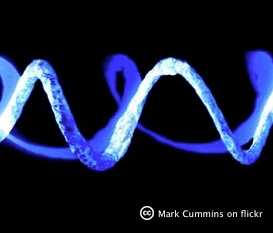Gene Expression & Regulation
Looking at the human body, it contains many different kinds of proteins, each with their own specific duty. These proteins account for our skin colour, the growth of our muscles, or even the rhythm of our heartbeat. In any case, the DNA in the nucleus of every cell is generally the same. This brings into question why there can be so many different proteins expressed from the same strand of DNA. As a result, we discover that each cell copies out different genes in the DNA strand, giving rise to specialization.
During gene expression, the information on the DNA is converted into the desired protein through the processes of transcription and translation. During transcription, a segment of genetic code is copied from the DNA strand onto an RNA molecule termed messenger RNA. This molecule then continues on to synthesize the production of the required protein through the process of translation.
The expression of genes can be regulated through 3 different input stimuli: Activators, Inductors and Inducers. These three stimuli only affect the stage of transcription, either preventing or stimulating the creation of a messenger RNA molecule. As a result, this allows or stops transcription, controlling whether a certain gene is expressed.
Acrobat Reader required
